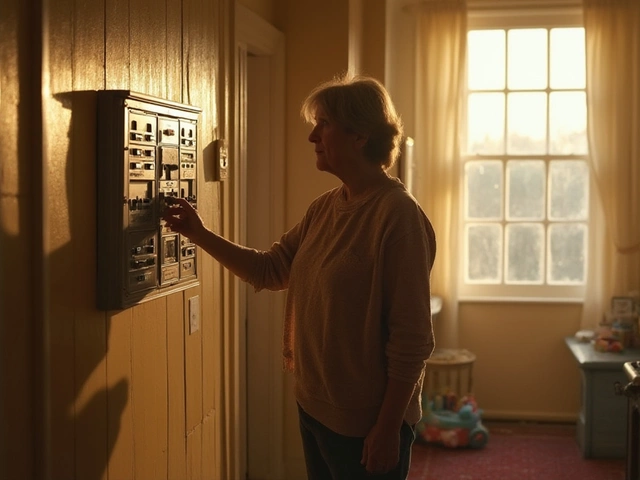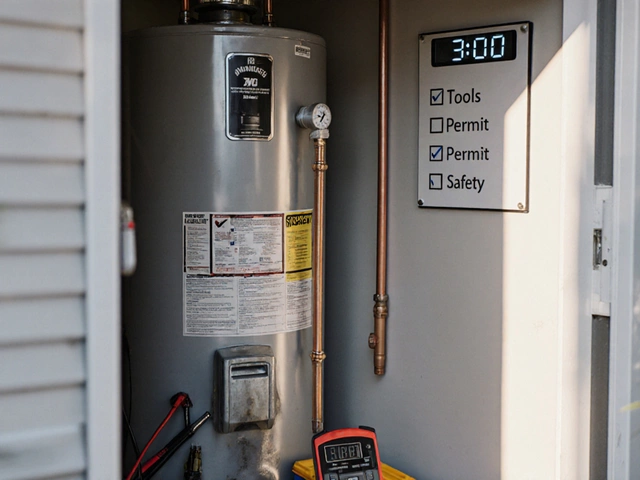Life Expectancy of a Gas Hob: How Long Should It Last?
February 21 2025Handyman Guide: Easy Fixes for Everyday Home Problems
Whether you own a flat in Bedford or a house in the countryside, a few handy skills can save you time, money, and a lot of hassle. From a noisy extractor fan to a boiler that’s losing pressure, the right fix is often just a simple step away. Below you’ll find the go‑to advice we use on real jobs, written in plain language so you can try it yourself before calling a pro.
Essential Tools Every Handyman Needs
A good toolbox doesn’t have to be massive. Start with a set of screwdrivers (flat‑head and Phillips), an adjustable wrench, a pair of pliers, and a basic multimeter for checking voltage. Add a pipe‑wrench for boiler work, a vacuum cleaner with a narrow nozzle for fan cleaning, and a bucket for water‑heater flushes. These basics cover more than 80% of the tasks listed on our tag page.
Top DIY Fixes You Can Try Today
1. Clean a sluggish kitchen extractor fan. Turn off the power at the breaker, remove the external cover, and soak the filter in warm, soapy water for 15 minutes. While it’s soaking, vacuum any dust from the motor housing. Re‑assemble, switch the breaker back on, and you’ll notice a big boost in airflow.
2. Check boiler pressure. Locate the pressure gauge on the boiler – it should read between 1 and 1.5 bar when the system is cold. If it’s low, use the filling loop (usually a pair of valves) to add water until the gauge is in the safe zone. Remember to close the valves tightly after.
3. Replace a faulty oven heating element. Unplug the oven, remove the rear panel, and disconnect the element’s wiring. Slide the old element out, slide the new one in, reconnect the wires, and replace the panel. Test the oven on a low setting first – you’ll hear the element glow and the temperature rise.
4. Flush a water heater to remove sediment. Shut off the power or gas, turn off the cold‑water inlet valve, and attach a garden hose to the drain valve at the bottom. Open the drain and let water flow until it runs clear. Close the valve, refill the tank, and turn the power back on.
5. Defrost a freezer that’s ice‑blocked. Unplug the unit, remove all food, and leave the door open. Place towels on the floor to catch meltwater. Once the ice is gone, wipe the interior dry, plug the freezer back in, and restore the temperature.
These fixes cover the most common posts on our handyman tag, from extractor fans and boilers to ovens and freezers. They’re safe for anyone with basic tools and a bit of patience.
If a problem feels beyond your comfort level – for example, a gas leak, a cracked boiler heat exchanger, or an electrical fault that trips the breaker – call a certified gas engineer right away. Safety always comes first.
Keep this guide handy, and you’ll find that many household hiccups are quicker to sort than you think. When in doubt, a quick call to Bedford Gas Appliance Repair Services can give you peace of mind while you tackle the easy jobs yourself.
 7 Feb
7 Feb
Who Installs an Extractor Fan? Your Go-To Guide for a Swift Setup
Extractor fans are essential for ventilating bathrooms and kitchens, reducing humidity, and preventing mold. If you're wondering who to call for installation or repairs, this article gives you the lowdown. Discover which tradesperson fits your extractor fan and get practical tips for a fuss-free experience. Uncover interesting facts about extractor fans that might surprise you.
Read More...



